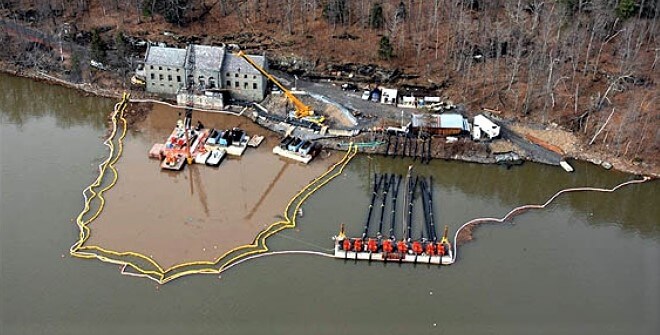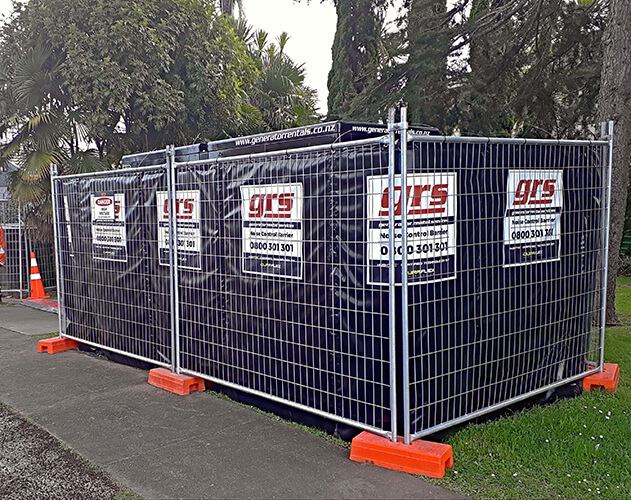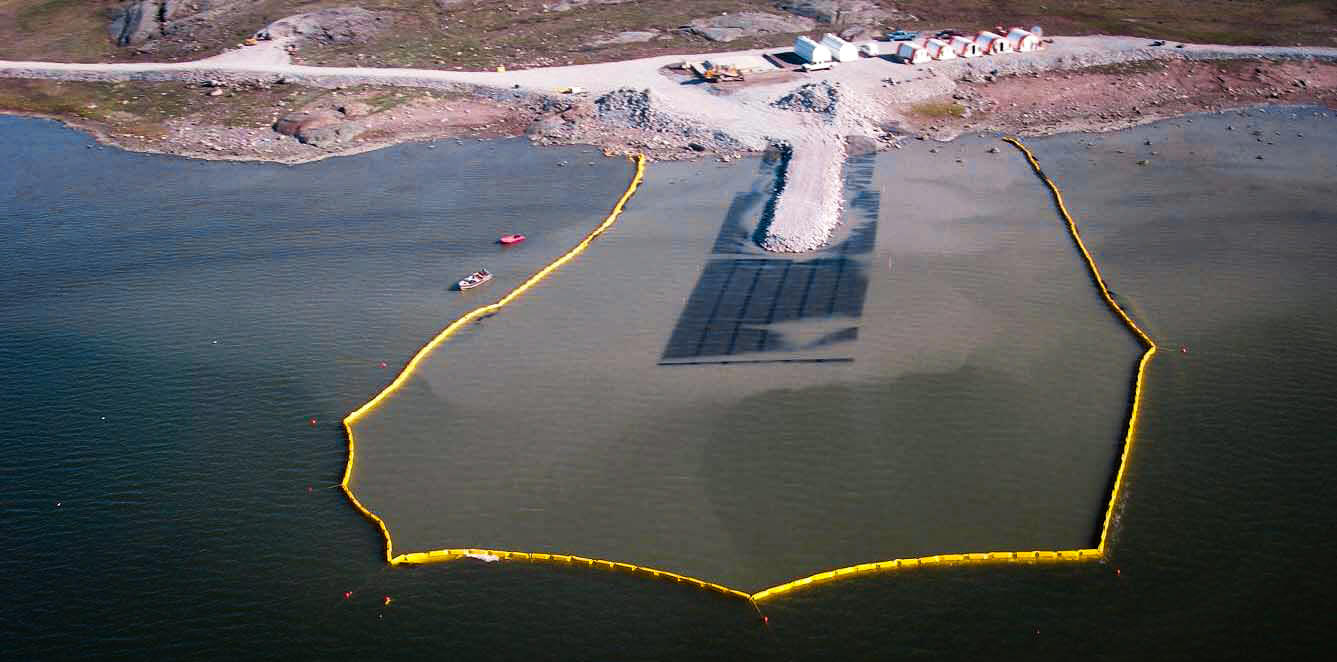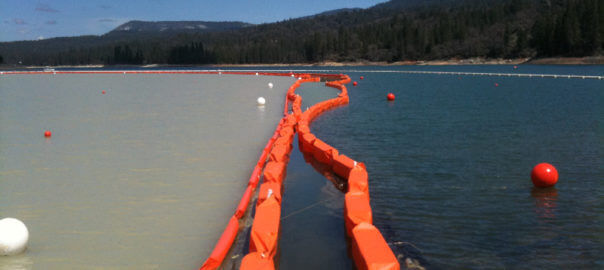Silt curtains, also known as turbidity curtains, are deployed in waterways to prevent contamination.
They consist of a floating barrier designed to contain silt and sediment stirred up by construction activities in or near water bodies, dredging operations, and rainwater runoff. The disturbed sediment contained within the water column can then settle to the bottom.
If you’re planning to purchase a silt curtain for your site, there are several factors you’re going to need to consider. In this article, we’ll discuss critical aspects to think about when choosing a turbidity curtain, the types available, and options for customising your silt curtains.

Factors To Consider
The key factors affecting a curtain’s suitability for a particular project fall into two fundamental classes – environmental factors and site conditions. The former includes water, wind, and current, while the latter involves project type and duration.
One of the most important factors of all, however, is depth.
Appropriate Depth
Turbidity curtains allow suspended sediment to settle by disrupting the flow of water. This means that your curtain has to be deep enough to disrupt the current while remaining clear from the sea bed at low tide. Where necessary, it must also be at a depth that complies with environmental regulations.
It’s important to note that silt curtains do not need to reach a river or sea bed to be effective. Generally, you should allow a minimum of half a metre between the curtain and sea bed at low tide.
Why is this the case?
A turbidity curtain promotes the settling of sediment by driving particles closer to the sea bed. As water always follows the path of least resistance, this means that it will pass between the curtain’s bottom edge and the sea bed. This gap between the curtain and sea bed provides more effective pressure release, helping force the sediment deep enough, improving settlement.
What happens if your silt curtain is too deep?
If silt curtains are too deep, slack can be generated in the fabric at low tide. This can create issues during periods of high wind. The slack will billow, creating strong forces against the curtain and mooring systems.
In calm water, sediment could also build up over the ballast chain, which can start to drag the curtain down.
In moving water, the curtain needs to be able to move freely so that the force of the water can pass through and underneath it. When the skirts are at full depth, the curtain’s surface area in the water column increases, increasing the forces the curtain is subjected to.


Other Important Factors To Consider
The Waterway
If you plan to deploy silt curtains in open water, they need to be robust enough to handle all sea states, wind, and tidal flow conditions. Open water often calls for a curtain made of heavier duty materials to ensure longevity.
The Project Duration
If the curtain is going to be deployed for longer than 12 months, it will need to withstand a wider range of weather and current conditions than a curtain for a shorter project. You will ideally want to look for one with increased buoyancy made from a heavier grade geotextile.
Vessel Traffic
Vessel traffic in the deployment area of your silt curtains means that you’ll have to consider how the frequency and size of vessels will affect the curtain’s behaviour. You could use increased flotation and heavier ballasts when setting it up.
If there is vessel traffic in your waterway, you might also need to gain approval from harbour authorities, who might have specifications about the type of curtain they permit. You’ll also want to consider colours that help facilitate visibility, especially at night.
The Types Of Silt Curtains Available
Most turbidity curtains generally fall into three major groups. These are usually classified as types I, II, and III.
Type I curtains are ideal for use in calm waters and smaller construction sites.
Type II silt curtains are designed for use in faster-moving water and can handle small waves.
Type III curtains are the most heavy-duty on the market. They are used in locations with high winds, fast-moving water, and large waves.
What options are there for customisation?
Depending on your project’s demands, you might conclude that your best option is to choose a custom solution. These curtains are a highly customisable product – you can choose the curtain’s fabric, the skirt type (whether it is made of filtration or solid material), and the curtain’s colour. You could use bright colours for branding or to warn others of your curtain’s presence.
If you’re after an effective, reliable range of silt curtains to help control sediment around your site, Duraflex Greentec turbidity curtains are an excellent choice. What’s more, as we manufacture all of our products in house, we can easily customise our products to meet your unique needs.
To learn more or to get a quote, please contact us at 02 9133 8792 today.


















